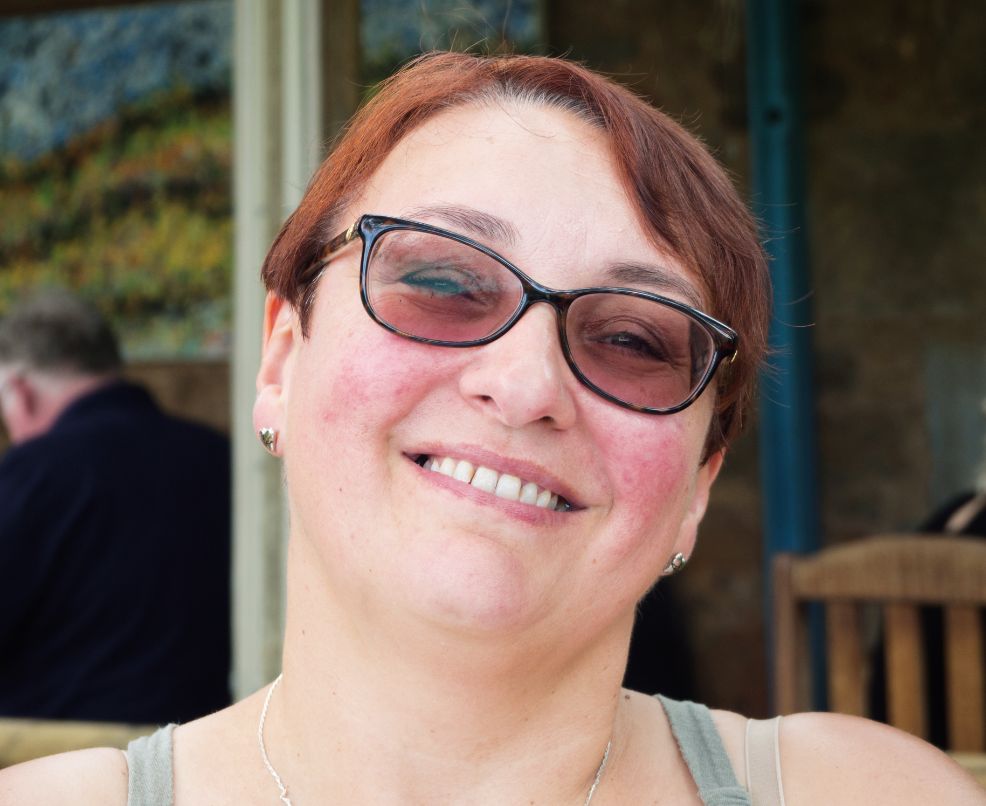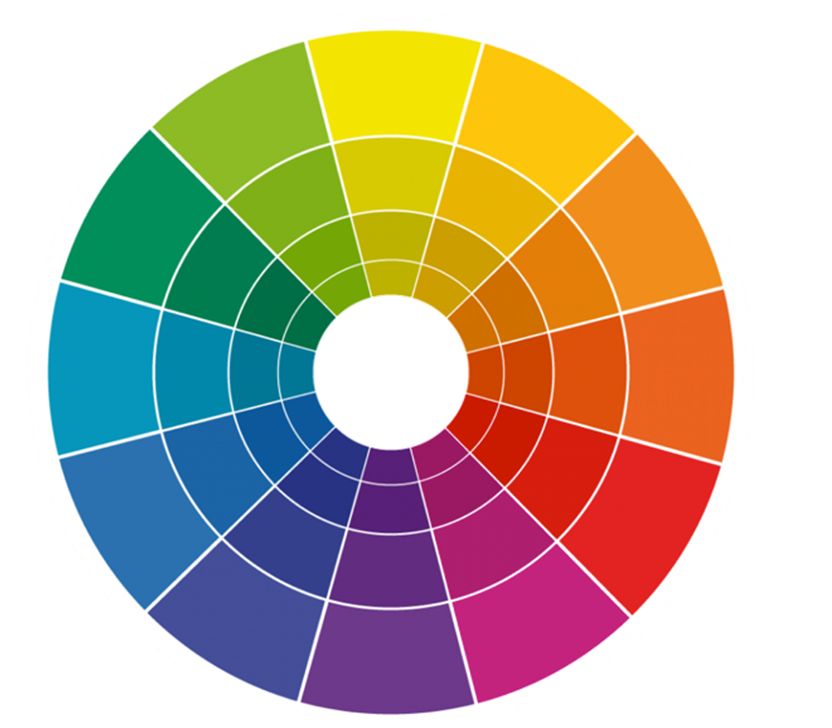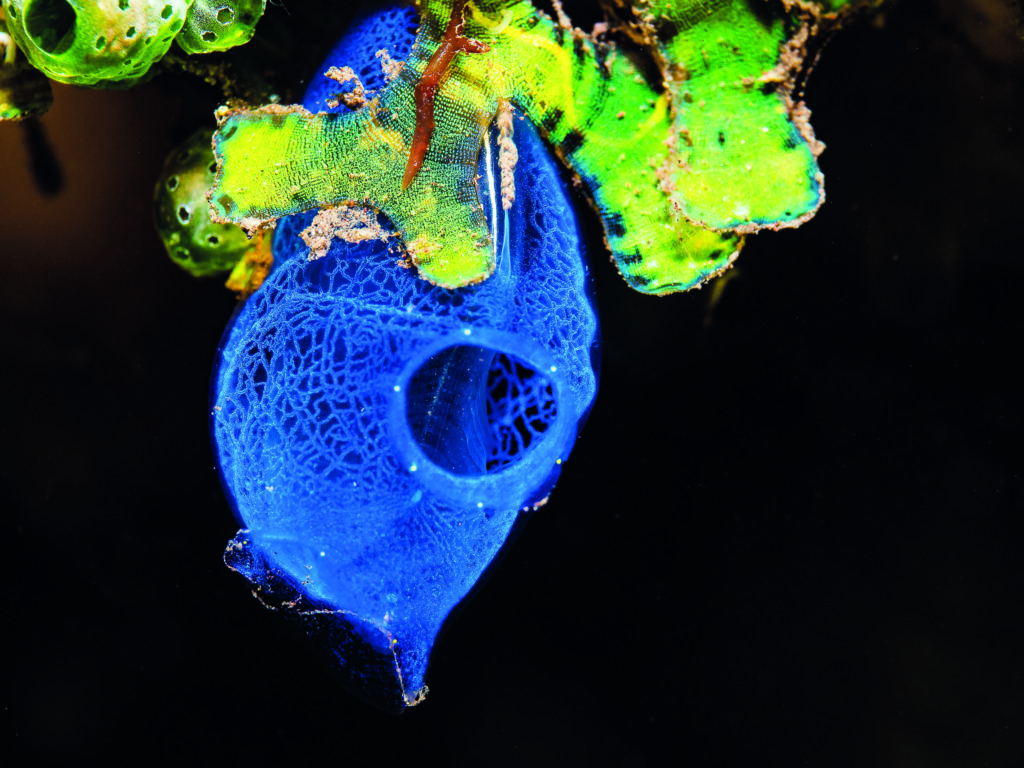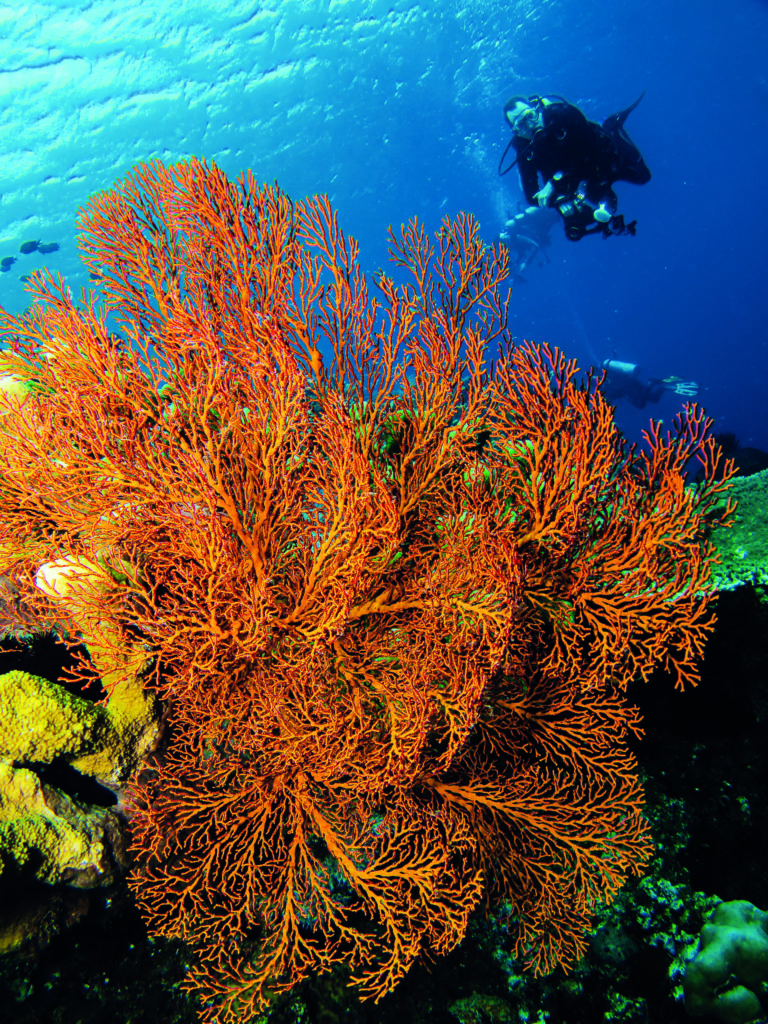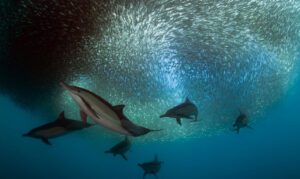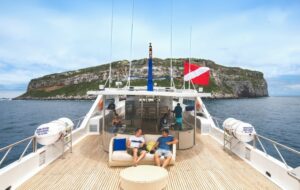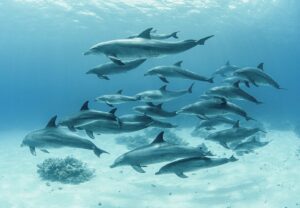Alphamarine Photo’s Anne Medcalf discusses the importance of colour in underwater photography, and how you can make the most of it in your shots
The Rolling Stones were right when they sang ‘she comes in colours everywhere’ in 1967, and nowhere is this more true than when scuba diving in whichever body of water we are in. Whether we are in a vivid Red Sea blue or a Scottish green, there are a myriad of colours that we can use to our advantage as photographers. It may be a vividly coloured fish, or a flash of neon bright on a clam or scallop, and having an understanding of making the most of the colours we see while diving will improve your pictures.
When photographers talk about colours, they use the terms hue, saturation and luminance, and if you edit your pictures in Adobe Lightroom or other editing software, there will be options available to edit all three in post processing.
The hue is the actual colour itself, although this depends on the amount of light hitting the subject – this can be why, when you take a picture at depth with a strobe, you may be surprised at the actual colour of the subject, as your own eyes could not see the authentic hue at that depth.
As divers, we are always thinking about how we lose the ability to see colours as we descend, so it is something to be aware of; although the hue that we see can be subjective, our eyes can perceive things differently from our buddy, which led to the internet storm over whether a dress was green or gold!
Luminance describes how bright the colour is, this is dependent on the amount of light being absorbed by the subject. This is why when we get deeper, the colours we see appear more muted. Saturation is how pure a colour is, if it is highly saturated it is more vivid and if we desaturate a colour completely in post processing, we end up with the opposite, a boring mid-grey.
Colour temperature is another thing to consider, warmer colours such as red, orange and yellow tend to jump out at the viewer, whereas the cooler colours – green, blue and violet – tend to recede into the background. As divers, we are normally working with either a blue or green water background when we are taking wide-angle shots, so this does work to our advantage underwater.
Colour Wheels
Colour wheels can be found everywhere, whether for photographers or painter and decorators, and the principles are the same for the underwater photographer as the person redecorating their living room. If you want a relaxing, calm effect you should be using analagous colours, those that are next to each other on the colour wheel.
If you want something to catch your attention and stand out from the picture, whether a feature wall in a different colour or an orange fish against the blue sea, then complementary colours are best. These are opposite each other on the wheel and automatically bring a sense of contrast into your picture and ensures that the elements of your picture are easily separated by the eye, making your subject stand out.
So if we look at our green or blue water background, we want to find oranges and reds which will stand out, this is why anemonefish and orange or yellow fan corals make such popular pictures. Using interestingly coloured corals and sponges as backgrounds for macro shots also works well.
So how can we use our knowledge of colour to our advantage underwater? Colour links with light, your camera will only be able to pick up what it can read at depth and, like our own eyes, the camera’s sensor will start to lose colour information the deeper we go, starting with the reds and oranges.
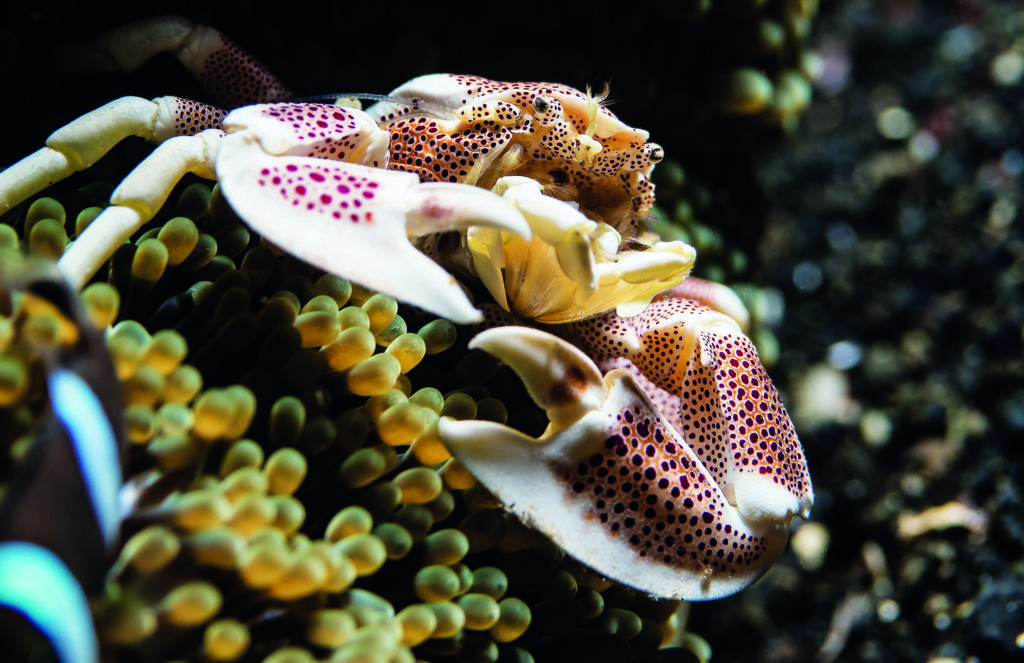
If you want to get good colourful images in darker conditions or at depth, then you need a strobe to get the best shots, as this will be able to shed enough light on our subject to show their true colours. Strobes are much better than a video light if you are taking still photographs as it gives a short flash of light that is more powerful than all but the strongest underwater lamps, and therefore brings out more colour in your photo.
If you only have a video light or no light at all, don’t despair, just learn to pick your battles. For wide-angle shots stay near the surface, there is a lot going on in the first 5m of water where the light will penetrate the surface. Reef tops in Egypt and Indonesia, for example, make lovely shots with dappled sunlight coming through the surface to shine on the colourful soft and hard corals and fish.
Otherwise, get close to your subject and take macro shots – more light will be hitting the sensor of your camera the closer you are, as the light has to travel from the surface to your subject and then on to your camera, so anything you can do to lessen the distance the light travels will give you more colour.
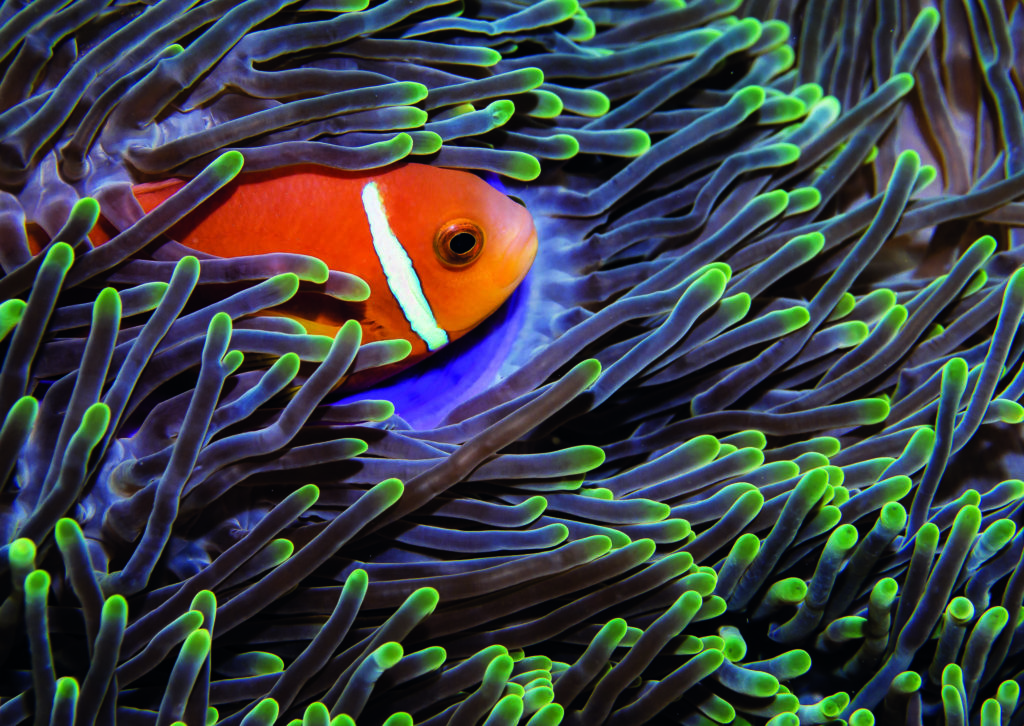
Using a custom white balance will also help to make the colours pop and be more realistic, a very useful tool if you are shooting in JPEG and not RAW and don’t like to do much post processing. If this is what you prefer, then make sure you have a camera with a good custom white balance mode that is easy to use as you need to reset this as your depth changes – some cameras offer an easy to use and effective mode, while others do not work as well underwater or need a lot of fiddly button presses to get it done, so do bear this in mind and get advice on the best options if you want to work with available light.
When we are using our camera, we need to think about the effect and feeling the available colours give as well as the composition. When we are taking close-focus wide-angle shots, it is nice to have a colourful point of interest close to the camera, whether a diver, coral or marine life.
This will capture the attention of the viewer, with the added advantage that the blue or green background will always look more muted due to the lack of light reaching the middle distance, no matter how good the visibility is, and this will give a perspective of distance, making the image appear three dimensional instead of looking flat.
Using strobes will help your focal point stand out but using custom white balance and staying in the first 10-15m will help if you don’t have a strobe yet.
Schools of fish come in different colours and the photographer can make the most of this by getting in as close as possible to maintain the vibrance of their colours – think of the distinctive yellow snapper in the Maldives, and how they can instantly take the viewer on a journey to the tropics, or the oranges and yellows of British starfish and anemones, which surprise our non-diving friends by showing how much beauty there is off our own coasts.
When we are taking macro shots we can get very close to some of our subjects and use some of the vivid colours to our advantage. Nudibranchs are a macro photographer’s dream as they are mostly slow moving and also come in the most-amazing range of colours, the difficulty is getting them against the right background to let their colour shine, although this is no excuse for those who condone moving critters to make a better shot!
A good photographer just needs to use a little thought to protect the marine environment – is the nudibranch moving towards a better background, can you safely change your position in the water to get a better angle, or can you get your camera lower so you can shoot upwards to remove a poor background? If you enjoy muck diving in Indonesia, many of the critters are sat on a very unpleasant-looking sandy bottom, so either use photographic techniques to isolate your subject, such as using a shallow depth of field or a snoot, or find the brightly coloured creatures that will keep the viewer’s eye away from the muck.
Frogfish are a great example of this, white and black frogfish are more difficult to get a pleasing picture of due to their lack of colour, whereas a painted or orange frogfish will always stand out in the picture. Macro shots also give you more opportunity to showcase the more unusual of the cool colours – violet and indigo.
Shots using subjects with these colours automatically catch the eye as they are not as commonly seen underwater. Pretty lilac squat lobster, usually found against a sponge for a good background, make lovely macro photographs, as do the deep purple magnificent anemones in the Maldives, which can be used for macro shots as a background for their resident anemonefish.
They can also make excellent wide-angle compositions, especially if there is some current to showcase the purple underside of the anemone – this gives you the opportunity to get the deep purple of the anemone with the orange fish against the blue background, which will make a stunning shot.
If you shoot in RAW and use processing software such as Adobe Lightroom, then you will be able to change the hue, saturation and luminance of specific colours after the fact. You can also remove colours completely by desaturating and leave one prominent colour visible for a different effect.
However, although the software is a very powerful tool that can improve your pictures, there is always something very satisfying about showing your beautifully colourful shots to your buddy after a dive on the camera screen – not that underwater photographers are ever competitive!
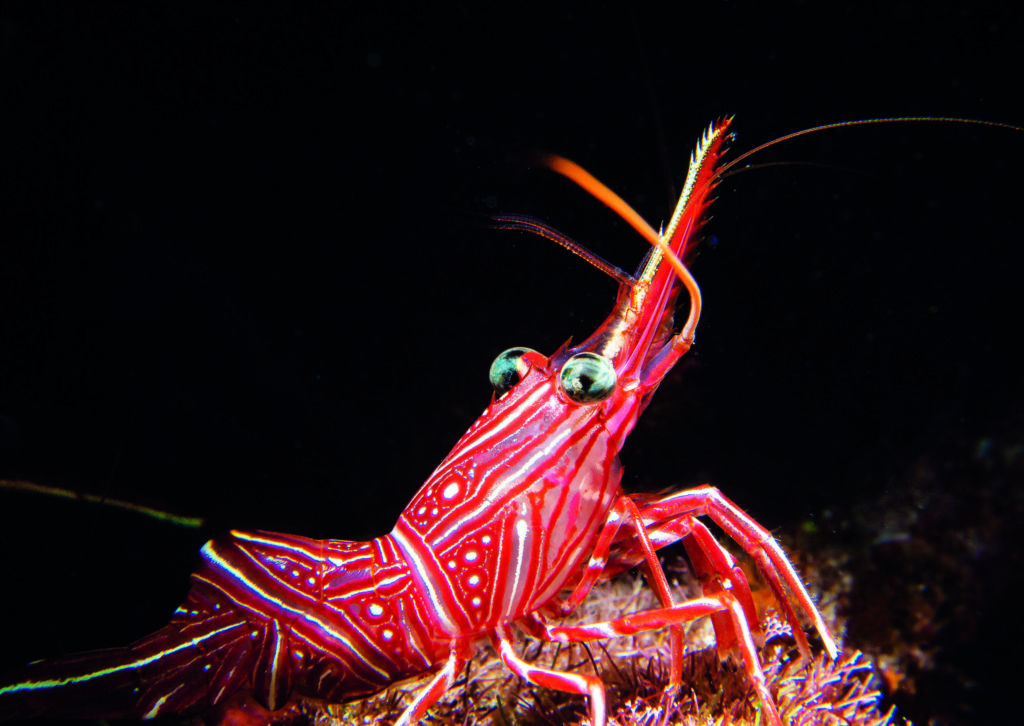
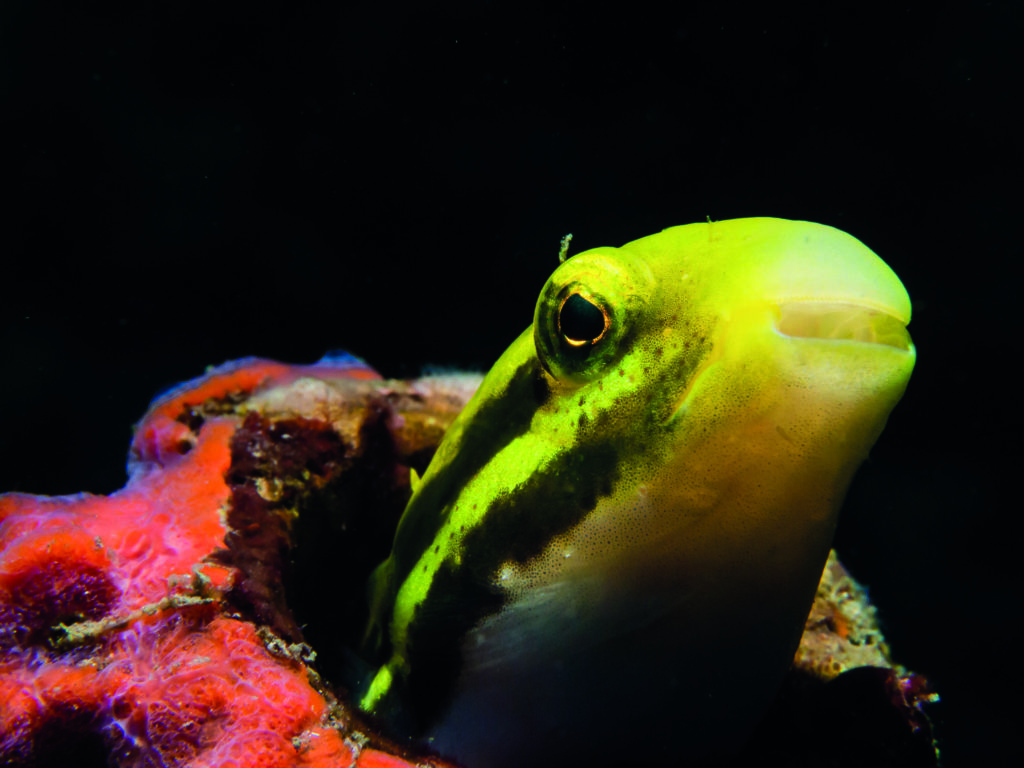
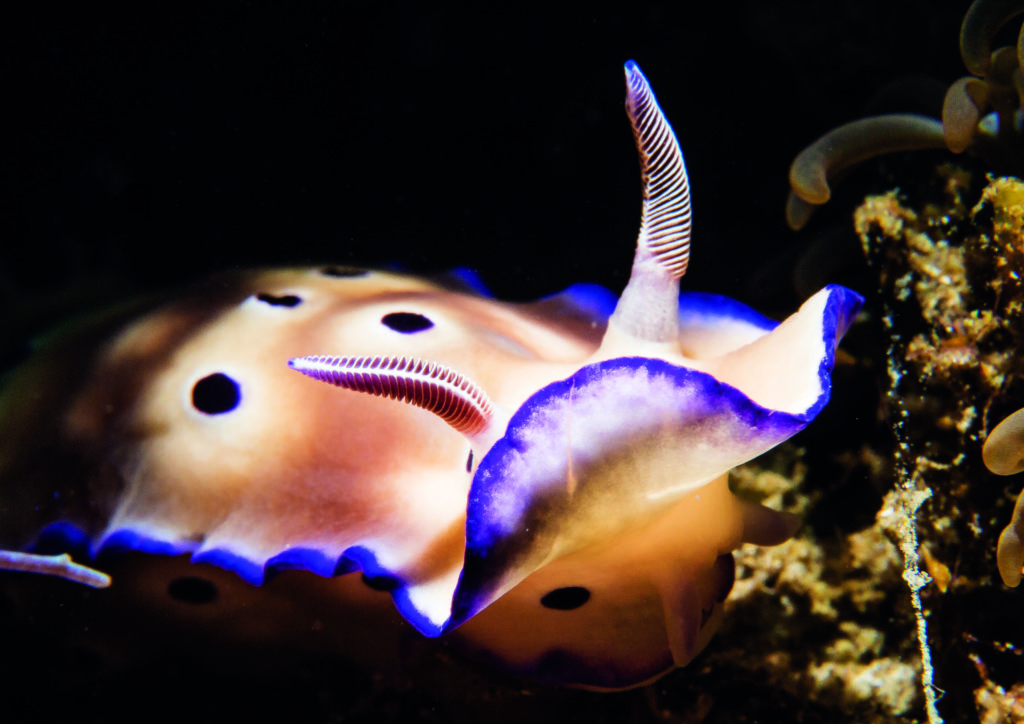
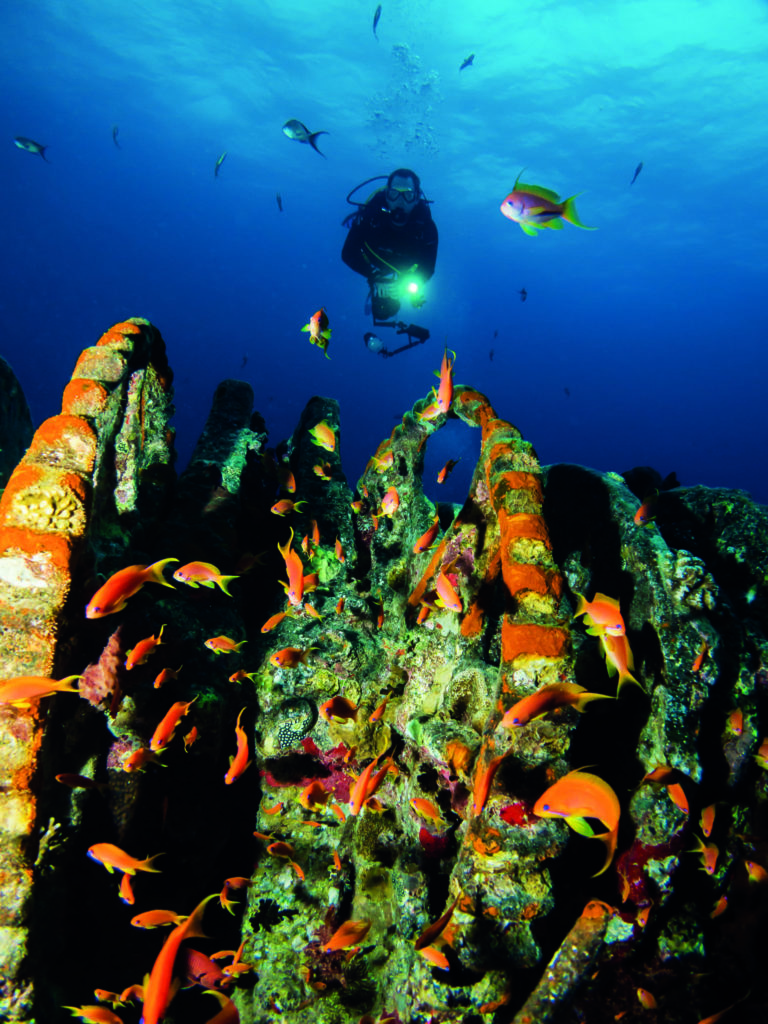
There is a place for all images in underwater photography, and black and white shots can be stunning but we see the world in colour, and many of us got our first interest in marine life and diving by watching colourful Jacques Cousteau videos or by picking up a book which usually has an eye-catching and vibrant photo on the cover.
This explains why we enjoy being able to photograph the wonderful creatures and scenery that we are privileged to enjoy, showing the remarkable colour and beauty that is below the surface.
Biography: Anne Medcalf
Anne learnt to dive in 2006 and began taking pictures underwater a short time later with a budget digital camera, beginning to get serious about shooting underwater images soon after this. Anne and her husband Phil have been regulars on photography workshops run by Paul ‘Duxy’ Duxfield since his first trip in 2010. Over the years they’ve developed from keen amateurs to semi-professional photographers who run Alphamarine Photo.
Anne is passionate about caring for the underwater environment and enjoys spending her dives observing and photographing the marine life in the UK and abroad.
Alphamarine Photo
Alphamarine Photo run workshops and courses in underwater photography, photo-editing and videography hosted by dive centres and clubs, as well as organised by themselves. Beside training they are a retailer selling a range of underwater photography equipment based on a strong principle of giving the best advice and providing the customer with the equipment that meets their needs and budget.
